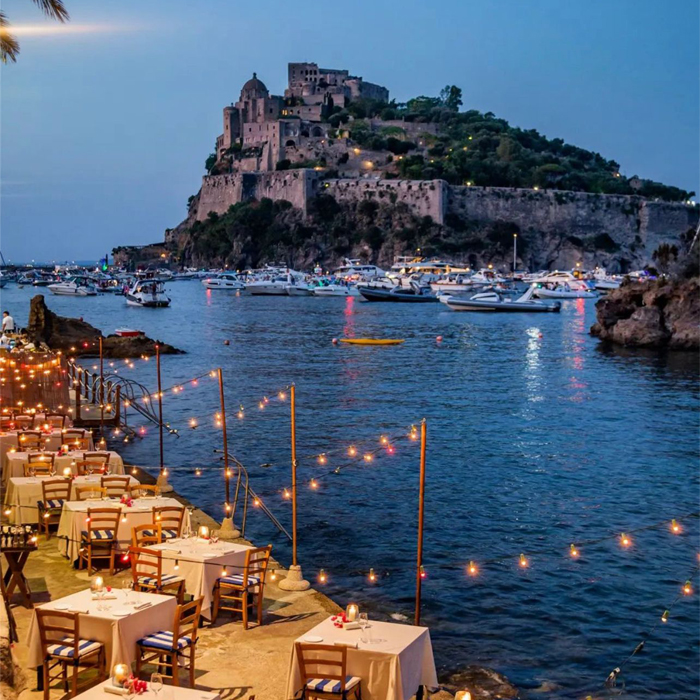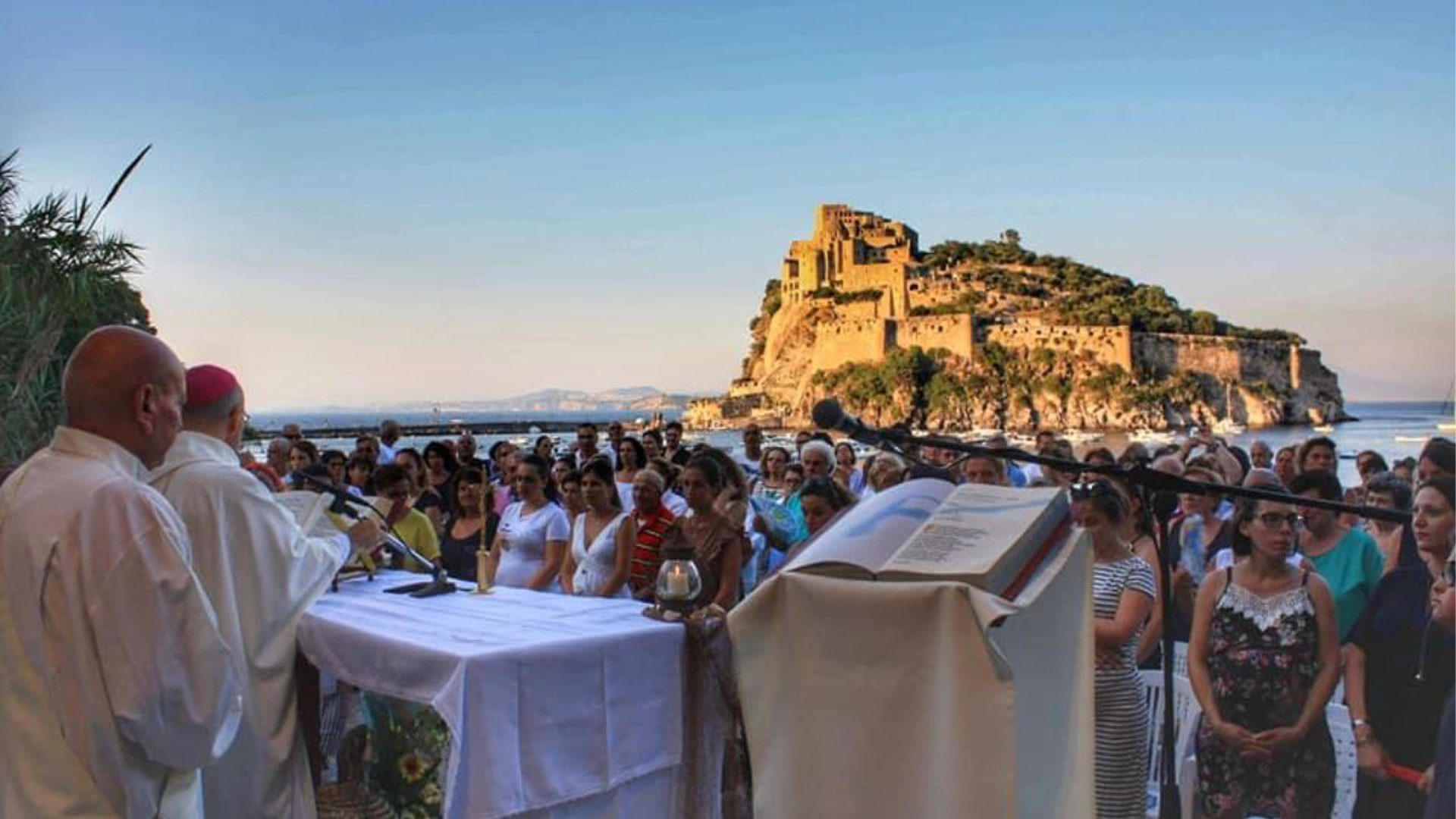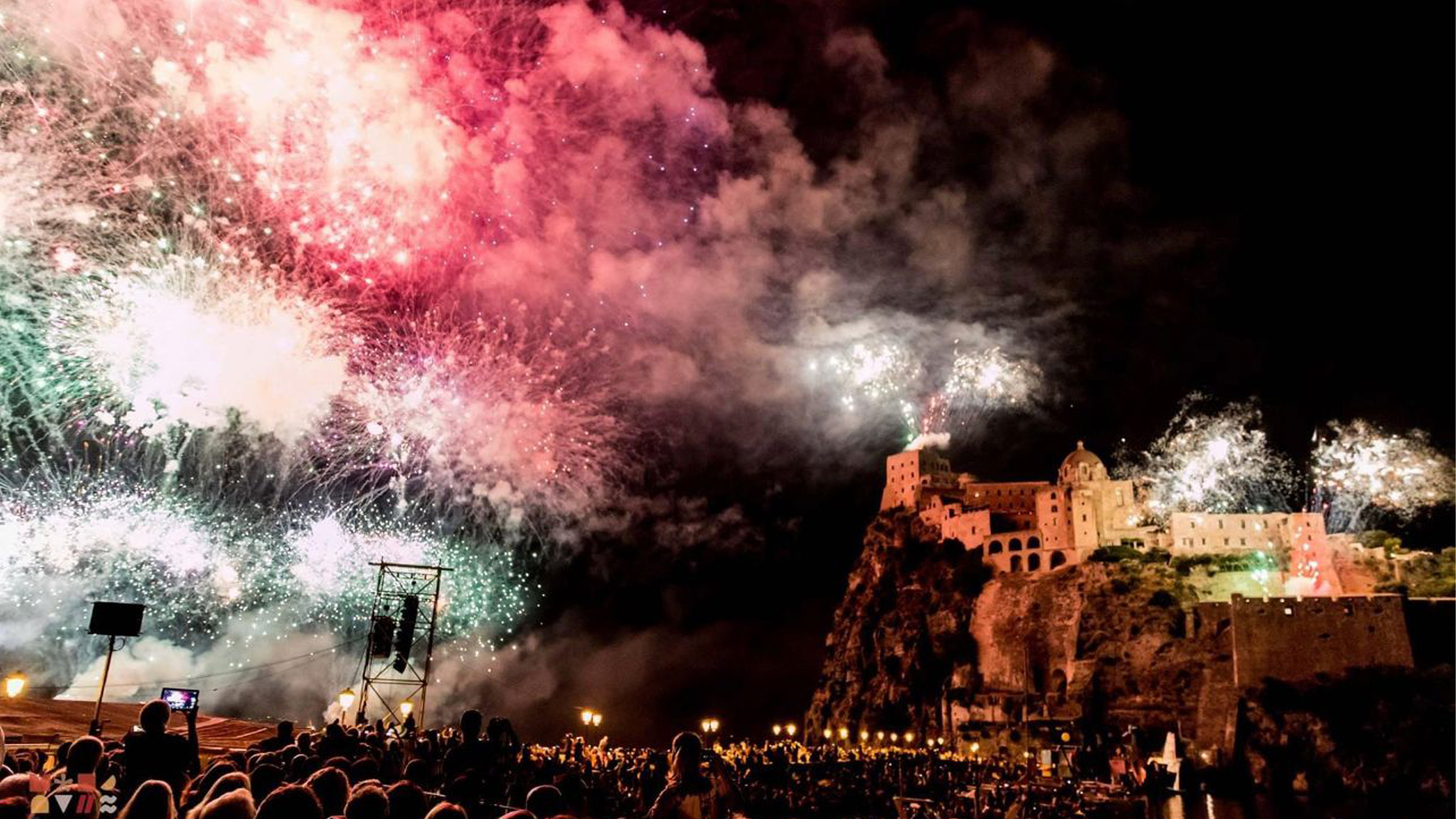Every year on July 26th, the volcanic island of Ischia, located just off the coast of Naples, holds the “Festa al Mare,” the festival by the sea, a spectacular event dedicated to the isle’s patron saint, Sant’ Anna. A cultural phenomenon since 1932, the seaside festival mainly comprises a fantastical parade of allegorical floats backdropped by an impressive fireworks show.
Origins of the Festival

Sant’ Anna, known in English as Saint Anne, was the Virgin Mary’s mother and is the patron saint of pregnant women. On July 26 in the 19th and 20th centuries, pregnant women went in procession to worship Sant’ Anna, a statue of which was located in a chapel in Ischia’s Cartaromana Bay, also home to the island’s most famous landmark: The Castello Aragonese, an ancient castle and former monastery located at the top of a volcanic islet that connects to the larger island of Ischia by a man-made bridge.
These women were often accompanied by possession of angler’s boats, which were decorated with bushes and flower garlands for the occasion. In 1932, a group of friends decided to hold a contest for the most beautifully decorated boat, an innocent game that resulted in the Festa al Mare. Over time, the competition moved away from boats and onto floats.
Celebrating the Feast Day

The festival begins with a solemn procession of pregnant women or women who want to become pregnant bearing an effigy of Sant’ Anna. This is followed by the main event: the Palio di Sant’Anna, where Ischia’s six towns, including the neighboring islands of Procida and Capri, compete for a prize il gozzo più bello, the most beautifully constructed allegorical float.
Il Palio consists of a parade of hundreds of floats that freckle the Cartaromana Bay in a game of light and artistry. These allegorical floats are created and decorated based on a chosen theme that usually centers around stories, characters, and myths related to Ischia. The entire procession is free to the public and is naturally overlooked by an eager crowd. A panel of judges chosen by the Municipality vote on the floats and award a prize to the most beautiful one.
The night culminates in the “burning” of the Castello Aragonese: red fireworks that cast the illusion of the structure being on fire to reenact the destruction wrought by the Saracens many centuries ago.
Asia London Palomba
Asia London Palomba is a trilingual freelance journalist from Rome, Italy. In the past, her work on culture, travel, and history has been published in The Boston Globe, Atlas Obscura, The Christian Science Monitor, and Grub Street, New York Magazine's food section. In her free time, Asia enjoys traveling home to Italy to spend time with family and friends, drinking Hugo Spritzes, and making her nonna's homemade cavatelli.


